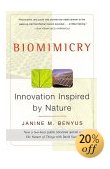There are many excellent books about Chaos theory and Fractals. Below are some that we frequently recommend and enjoy sharing with interested people. Best of all, by purchasing books here (through Amazon.com) you are helping to support the Fractal Foundation.
Just want to color some fractals and learn about them while doing it? Check out the Adult Coloring Book: Fractals!
 |
Fractals
In Fractals: The Patterns of Chaos, science writer John Briggs uses over 170 illustrations to clearly explain the significance — and more importantly, the beauty — of fractals. He describes how fractals were discovered, how they are formed, and the unique properties different fractals share. ‘Fractals’ is a breathtaking guided tour of a brand new aesthetic of art, science, and nature. It will revolutionize the way you see the world and your place within it. |
 |
Turbulent Mirror: An Illustrated Guide to Chaos Theory and the Science of Wholeness
Turbulent Mirror introduces us to the scientists involved in studying this endlessly strange field; to the theories that are turning our perception of the world on its head; and to the discoveries in mathematics, biology, and physics that are heralding a revolution… With practical applications ranging from the control of traffic flow and the development of artifical intelligence to the treatment of heart attacks and schizophrenia, chaos promises to be an increasingly rewarding area of inquiry — of interest to everyone. |
 |
The Colours of InfinityThe beauty and color of fractals is captured in a documentary also included on the DVD accompanying this unique and informative book. Introduced by Arthur C. Clarke, The Colours Of Infinity has received world-wide television coverage and ten years ago brought the subject of fractals to the general public for the first time: geometric exploration is brought to the general reader’s attention here, in a fine and highly recommended survey of fractal creations and math. |
 |
Seven Life Lessons of Chaos : Spiritual Wisdom from the Science of Change
The seed aspects of chaos theory are brilliantly integrated in this book into a broad perspective illuminating the nature of deep creativity. Chaos emerges not as a negative force, but as a perpetual and comprehensive creative process linking all aspects of life. Electrifying. Makes chaos not only understandable but actually usable. These seven lessons are worth taking-and taking to heart. |
 |
Chaos: Making a New Science
Gleick here adventurously attempts to describe the revolutionary science of “chaos,” a challengingly abstract new look at nature in terms of nonlinear dynamics. “A ground-breaking book about what seems to be the future of physics… This is not a purely technical book. Instead, it focuses as much on the scientists studying chaos as on the chaos itself. In the pages of Gleick’s book, the reader meets dozens of extraordinary and eccentric people. |
 |
Signs of Life: How Complexity Pervades Biology
Signs of Life applies complexity to the whole of biology-from molecules to Gaia-and sets a revolutionary new agenda for complexity theory, evolution, and development. Signs of Life is an entirely new approach to the problems of understanding living systems. It applies the mathematics of order and disorder, of entropy, chance, and randomness, of chaos and nonlinear dynamics to the various mysteries of the living world at all levels… This book will help set the agenda for biology in the coming century. |
 |
Blackfoot Physics: A Journey into the Native American Worldview
In an edifying synthesis of anthropology, history, metaphysics, cosmology, complexity and quantum theory, Peat compares the medicines, the myths, the languages, indeed the entire perceptions of reality of the Western and indigenous peoples. What becomes apparent is the amazing resemblance between indigenous teachings and some of the insights that are emerging from modern science, a congruence that is as enlightening about the physical universe as it is about the circular evolution of humanity’s understanding. |
 |
Biomimicry: Innovation Inspired by Nature
Biomimicry is a revolutionary new science that analyzes nature’s best ideas — spider silk and prairie grass, seashells and brain cells — and adapts them for human use. Science writer and lecturer Janine Benyus takes us into the lab and out in the field with the maverick researchers who are applying nature’s ingenious solutions to the problem of human survival: stirring vats of proteins to unleash their signaling power in computers; analyzing how spiders manufacture a waterproof fiber five times stronger than steel; studying how electrons in a leaf cell convert sunlight to fuel in trillionths of a second; discovering miracle drugs by observing what animals eat — and much more. |
 |
Zoom
A wordless picture book presents a series of scenes, each one from farther away, showing, for example, a girl playing with toys which is actually a picture on a magazine cover, which is part of a sign on a bus, and so on. A fun illustration of the fractal principles of scaling that will entertain viewers of all ages. |